One of the most important organs for humans is the eyes. They are very vulnerable to external factors. They are protected by the eyelids, the skin of which is thin and delicate. Patients often turn to an ophthalmologist complaining of peeling or redness. It is irresponsible to ignore this symptom and consider it harmless to health. If the eyelids peel, this may be the first sign of the development of an ophthalmological disease that can cause serious harm to the organ of vision.
Causes and provoking factors
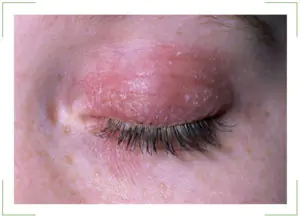
Sensitive eyelid skin reacts negatively to any negative external influence. The epidermis turns red, cracks and peeling appear. Also, such symptoms can signal a malfunction of the internal organs. Most often, problems with the skin around the eyes are caused by the following factors:
- Allergic reaction
- Use of low quality cosmetics
- Eyelash mite causing demodicosis
- Inflammatory lesion of the epidermis resulting from exposure to damaging factors
- Failure to comply with personal hygiene rules
- Fatigue of the organ of vision
- Exposure to sunlight
- Weathering
- Spending a long time in front of a computer monitor
- Lack of vitamins
- Infectious disease
- Dry eye syndrome
- Fungus.
| Several factors can simultaneously cause peeling of the eyelid. To stop the disease, it is necessary to identify them all and eliminate them with the help of well-chosen therapy. |
Allergy
One of the most common reasons causing the development of anomalies. When a person comes into contact with an allergen, the eyes become very watery, and accordingly the skin becomes irritated and begins to peel off. The longer the body is exposed to the “pest”, the stronger the unpleasant symptoms.
Most often, a negative reaction occurs upon contact with the following irritants:
- Plant pollen
- Animal fur
- Cosmetical tools
- Products
- Dust
- Harmful fumes from household chemicals, etc.
To get rid of an allergic reaction, you must stop contact with the irritant.
Demodicosis
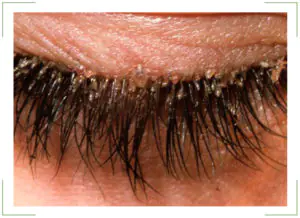
This ophthalmic disease is caused by eyelash mites. Most often it appears in autumn and spring. The cause of the damage is a weakened immune system pensioners are also at risk. Mites get under the skin of the eyelids and begin to feed on hair follicles and can affect the sebaceous glands. The first symptom of the disease is loss of eyelashes and inflammation of the eyes, increased lacrimation and peeling of the skin under the eyelids.
Self-medication should not be practiced under any circumstances any medications should be prescribed by a doctor after a preliminary examination and a series of examinations.
You will learn how to protect yourself from demodicosis from the video.
Fungus
Failure to comply with basic hygiene rules and the use of other people's cosmetics leads to a person contracting a harmful fungus. In this case, you need to prepare for long-term treatment, since it is impossible to get rid of the “pest” in a couple of days.
As a result of a fungal infection, chronic mycosis can develop, affecting the hair and nails. The risk group includes people with weak immune systems. Often the fungus “joins” other pathologies, such as diabetes or oncology.
Return to contents
Infectious diseases
If the eyelid is peeling, the reason may be hidden in the development of such ailments as:
- Conjunctivitis
- ARVI
- Problems with the gastrointestinal tract
- Trachoma
- Herpes
- Keratitis.
Bacterial blepharitis often affects the delicate skin around the eyes. The disease can affect the cornea and conjunctiva. To treat the disease, ointments are used that contain gentamicin or erythromycin.
| Seborrheic dermatitis is harmful to the skin. Its main signs are swelling of the eyelids, the appearance of small scales between the eyelashes that connect to the epidermis. In appearance they resemble dandruff. |
Lack of vitamins
Peeling of the skin provokes a lack of vitamins A, D and E. The causes of vitamin deficiency include:
- Unbalanced diet
- The presence of an illness accompanied by problems with the absorption of beneficial microelements from the intestines
- Lack of solar radiation
- Taking medications containing vitamin antagonist substances.
To eliminate unpleasant symptoms, review your menu and lifestyle.
Inappropriate cosmetics and improper care
These factors often cause the development of anomalies. To avoid skin flaking and redness, follow these rules:
- Do not use cosmetics containing abrasive particles
- Do not wipe the area around the eyes with toners that contain alcohol
- Never apply expired cosmetics to your skin
- Select products according to your age
- Store cosmetics correctly
- Wash your hands before applying makeup
- Make sure that all instruments that come into contact with the eyelid skin are clean.
When caring for the area around the eyes, the following is prohibited:
- Rub cosmetics intensively
- Leave them overnight
- Apply masks more often than prescribed in the instructions
- Use toilet soap to remove cosmetics.
If you experience itching or burning after applying skin care products, wash them off immediately. Rinse your eyes with clean water and take Diazolin or Suprastin.
Herpes and adenovirus
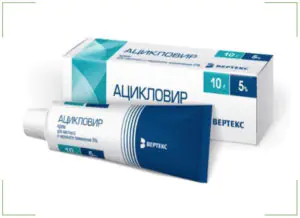
The first disease is accompanied by the appearance of small blisters with complications, ulcers form in their place. Adenovirus affects both eyes simultaneously and is accompanied by pathologies of the respiratory system.
Acyclovir is used to treat herpes. For the treatment of adenoviral conjunctivitis, warming lotions and eye drops from the group of corticosteroids are used.
Associated symptoms
Peeling of the skin around the eyelids is accompanied by additional symptoms. Some of them are very specific and help to easily identify the cause that triggered the development of the anomaly.
Typical accompanying symptoms:
- Unbearable itching
- Redness of the epidermis around the eyes
- Swelling of the eyelids
- Intolerance to bright light
- Increased tear production
- Pain in the eyes
- Eyelashes break and fall out
- Redness of the sclera is observed.
| Discharge of pus may signal the development of conjunctivitis in this case, before starting treatment, it is necessary to establish its type (allergic, bacterial, etc.). |
If the skin under your eyes peels, you should immediately consult a doctor. Unbearable itching and redness cause discomfort, and the damaged epidermis becomes very thin, which can lead to serious complications. Medical attention is required if unpleasant symptoms persist for three days.
Return to contents
Where to go?
The appearance of the first signs of damage to the epidermis around the eyes is not a reason to panic, but you should not hesitate to visit a doctor. Do not forget that the skin of the eyelids is very thin and delicate, and any injury to the organ of vision can lead to irreversible consequences.
First of all, visit an ophthalmologist and a dermatologist in some cases, a consultation with an allergist is required.
Diagnostics
Initially, the ophthalmologist conducts a visual examination of the patient, asking him in detail about the symptoms accompanying the course of the disease and illnesses suffered in the recent past.
To make an accurate diagnosis, a blood test is performed, eye secretions and tear fluid are taken for examination. To visually analyze the condition of the organ of vision, the doctor uses a slit lamp. To detect eyelash mites, four eyelashes are taken from the upper and lower eyelids for laboratory testing.
Treatment with drugs
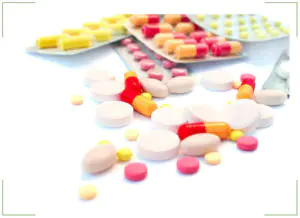
Therapy is selected for each patient individually after identifying the factor that triggered the development of the disease. It is important to treat not the manifestation of the disease, but its source. Otherwise, any measures will not bring results.
Most often, medications are the first to hit the target. The doctor may prescribe the following medications:
- Antibiotics. The most commonly prescribed eye drops are Okomistin, Albucid and Tsipromed. For damage to the mucous membrane, tetracycline ointment is used
- Antiallergic and antihistamine medications. Helps get rid of itching and relieve swelling. This could be Claritin, Loratidine, or hormonal ointments that contain hydrocortisone
- Antiseptic drugs. Block the spread of pathogenic microorganisms. Use the most gentle means, such as “Vitabakt” or a solution of boric acid
- To combat the fungus, Levorin or Nystatin is prescribed
- Antiviral drugs. These include “Anaferon”, “Solcoseryl”
- If the cause of peeling lies in inflammation, then Sofradex or Maxitrol eye drops will help
- To relieve visual fatigue, doctors recommend taking Visine.
To strengthen the immune system and increase the body's resistance to negative factors, take a course of Vitrum Vision or Complivit Oftalmo vitamins.
| Often, to get rid of unpleasant symptoms, doctors prescribe topical medications (ointments and drops). They affect the source of the disease and almost never enter the circulatory system. If you need to use several types of drops, use them with a break of fifteen minutes. |
Help from traditional medicine
If the cause of the anomaly does not lie in a serious illness or you simply don’t have time to visit the clinic, try using the gifts of nature and grandma’s recipes. Some of them are excellent substitutes for medications and successfully fight the disease. However, despite their effectiveness, there is no need to abuse traditional medicine. Before using any recipe, consult your doctor.
To moisturize dry skin, use melt water and wash your face with it every morning herbal decoctions or tar soap are also suitable for this purpose. Tinctures from medicinal plants are an excellent option for compresses. The most commonly used plants are calendula, chamomile, and St. John's wort. At the stage of epidermal regeneration, you cannot use string and celandine, as they are very drying. Use the latter with extreme caution, as it is poisonous.
To prepare a medicinal decoction, no special knowledge or skills are required. Take a tablespoon of herb, pour a glass of boiled water and keep in a closed container until the infusion has cooled. Next, strain it and use it in the following way:
- As lotions. Soak a cotton pad in the liquid and apply to the affected organ of vision for half an hour
- For washing. Soak a cotton swab well in the solution and wipe the eye in the direction from the nose to the temple
- For rinsing. Dilute the broth with boiling water in a ratio of 1:5, and irrigate your face with it every time after washing.
Several proven traditional medicine recipes will also help get rid of peeling.
Return to contents
Camomile tea
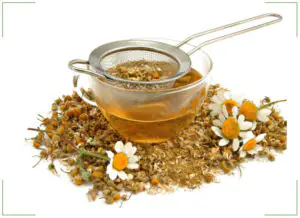
Take one tablespoon of dried chamomile flower and pour boiling water over it. After the composition has infused, strain it. Soak a cotton pad in the liquid and apply to damaged eyes. If the infusion is diluted with water, it can be used as eye drops. It relieves fatigue, relieves dryness and irritation.
Tea brewing
They help with visual fatigue and as therapy for a variety of ophthalmological pathologies. It is better to use loose leaf tea, but you can opt for bagged tea. The brew should be very strong, soak the discs in it and apply for about fifteen minutes.
Aloe juice
Cut the aloe leaf and place it in the refrigerator, this will help achieve the desired consistency. Within seven days, the juice is saturated with enzymes and becomes liquid. Lubricate damaged skin with it. The juice moisturizes well, eliminates redness and itching, and restores the epidermis.
Prevention and care of eyelid skin
It is impossible to 100% eliminate the risk of flaky skin around the eyelids, since the symptom is associated with various processes occurring in the body. But it can be reduced with simple preventive measures:
- Buy high quality cosmetics, do not skimp on yourself and your health. Be sure to remove your makeup before going to bed
- To wash your face, use clean water and toners that suit your skin type
- Apply soothing compresses once every seven days
- Give your eyes rest, do not overstrain the organ of vision
- Create a balanced diet, eat healthy foods and, if necessary, take vitamin complexes
- Avoid touching your face and eyes with unwashed hands.
| To prevent the development of this or that pathology, carefully monitor your health and listen to your body. If peeling occurs, seek medical attention immediately. |
Conclusion
Dry skin around the eyelids and flaking are the first signal that something is wrong with the body and it needs help. Timely consultation with a doctor will help avoid the development of serious pathologies, which often cause complete loss of vision. Contact your doctor, he will find out the cause of the disease and help you choose the optimal therapy.
Return to contents
There are many reasons that cause this unpleasant problem - the eyelids peel, itching, and severe burning appear. You should not treat alarming symptoms carelessly - a dangerous sign can portend more serious problems and even provoke a serious eye disease. Before starting treatment, it is recommended to determine which factor caused the peeling, try to eliminate it, and, if necessary, seek the help of a specialist. Timely use of medications or alternative medicine will allow you to effectively cope with the problem and prevent complications.
Causes of peeling eyelids
If the skin on your eyelids is peeling, there can be many reasons for the manifestation. Some of the factors that provoke the problem are quite harmless, and you can cope with them on your own. There are also more dangerous reasons for health, the elimination of which will require the help of doctors.
Some of the most common causes of redness and flaking of the skin include:
- allergic reaction to external irritants (low-quality or inappropriate cosmetics, frost, wind, ultraviolet radiation)
- the use of synthetic-based cleansers
- age (in old age, peeling occurs more often)
- regular work at the computer
- viral, infectious diseases
- constant scratching of the eyes
- severe fatigue
- improper functioning of the sebaceous glands (women with dry skin are more likely to suffer from the problem than women with oily dermis)
- low humidity in the room where you have to stay for a long time
- errors in choosing or wearing contact lenses
- using too harsh a liquid to wash your face.
Some of the most dangerous factors that provoke peeling are diseases. Demodicosis is one of the most common. Infection with a subcutaneous mite can lead to loss of eyelashes and the release of a thick liquid with an unpleasant odor from the skin.
Viral diseases and fungal infections also often lead to problems with the dermis. Itching, peeling, and the appearance of small bubbles with clear liquid are only part of the unpleasant symptoms that will have to be eliminated with the use of pharmaceutical drugs.
If you can’t determine why the skin is red, or what factor caused the unpleasant problem, it’s better to go to the doctor. It is recommended to begin treatment with pharmaceutical drugs or home remedies only after an accurate diagnosis - improper use can cause dangerous vision pathologies.
Prevention of the problem
It is not possible to completely prevent a dangerous manifestation even with preventive measures, but it is quite easy to partially reduce the danger. The eyelids often peel and itch as a result of careless hygiene or improper care of the skin, so it is better to adhere to the basic recommendations.
Strict adherence to the following rules will partially prevent trouble:
- use only high-quality cosmetics (preferably natural), and be sure to completely wash off makeup before going to bed
- do not rub your eyes with your hands, especially dirty ones
- for washing, use only preparations suitable for your derma type (if necessary, consult a cosmetologist about what to give preference)
- regularly carry out procedures to soothe the eyes, use herbal decoctions (chamomile, green tea)
- change your diet, introduce vegetables and fruits.
Do you know? Often, even complete regular rest is enough to prevent problems with the dermis of the eyelids. Eye fatigue is one of the reasons for the unpleasant manifestation.
What to do if your eyelids are peeling
The first rule for successfully treating flaky skin on the eyelids is to accurately determine the cause that provoked the unpleasant manifestation. If the factor is not too dangerous and can be eliminated without the help of a doctor, you can cope with the problem even with simple folk remedies. Lotions, compresses, masks - home cosmetology offers many effective methods that will quickly eliminate the problem.
Important! For complex diseases, it is better not to carry out treatment on your own. Improper use of aggressive medications or even home remedies on the upper eyelid can lead to dangerous diseases. It is not difficult to predict the results of self-medication - a significant deterioration or even complete loss of vision.
The causes, main risk factors for eyelid inflammation and treatment are described in the video:
Folk recipes
If it was possible to determine the cause of the unpleasant manifestation without any particular difficulties, and the skin of the eyelids is peeling due to harmless external factors, you will be able to cope with the problem without the help of a doctor. Among home cosmetology products, it is recommended to pay attention to chamomile decoction, tea leaves, and juice squeezed from aloe leaves. It is not necessary to stop at one method - it is better to alternate different compositions.
In addition to eliminating flaking, a home remedy will help you cope with additional symptoms - itching, burning.
Preparation:
- Rub 20 grams with your hands. dry inflorescences of the plant.
- Boil water (150 ml).
- Brew the vegetable raw materials, stir.
- Close the container and wrap it with a towel to increase the concentration of nutrients.
- Leave for half an hour, strain.
Using chamomile decoction is simple - soak cotton wool discs with liquid, place on the affected dermis, and leave for a quarter of an hour. Repeat the procedure daily, if the upper eyelid is itchy and very red, it is recommended to carry out at least three manipulations per day. You should not store the decoction for more than one day - the beneficial qualities quickly disappear.
Aloe lotions
The use of aloe will eliminate peeling, destroy bacteria that cause unpleasant discomfort, and relieve redness.
Preparation:
- Stock up on plant leaves in advance, wrap them in polyethylene film, and put them in the refrigerator for a week.
- Grind the wilted leaves into a fine paste with a sharp knife.
- Squeeze out the juice using a gauze cloth folded in several layers.
Soak cotton sponges with liquid, place the lotions on your eyes and leave for half an hour. Two procedures per day are enough. One is best done after waking up, the second before going to bed. Typically, the duration of treatment does not take more than two weeks - this time is enough to completely eliminate unpleasant symptoms.
Using green tea is a great way to cope with flaking, fatigue, and red eyes. If the lower eyelid is peeling, it is better to use tea bags - it is more convenient to use in the procedure.
Preparation:
- Brew 15 g. tea granules (it is recommended to take tea without additives or flavorings) boiling water (100 ml).
- Infuse the liquid half an hour is enough to obtain a rich product.
- If you use bags, it is recommended to simply pour boiling water over them, remove them from the liquid after a quarter of an hour, and squeeze them out a little.
Place wet tea bags or cotton pads soaked in liquid over your eyes. The duration of the procedure is a quarter of an hour. For severe peeling, it is recommended to carry out up to three manipulations per day.
A carrot-based emollient will eliminate flaking, promote healing, and improve the condition of the skin.
Preparation:
- Peel, wash the carrots, turn into pulp using a grater.
- Add mashed yolk to the mixture.
- Add flour (20 gr.), mix.
- Use immediately.
Place the prepared mixture on your eyes in a thick layer. Leave for a quarter of an hour. Remove with a sponge, wash with a herbal decoction (chamomile, string). One procedure per day is enough.
What can you buy at the pharmacy?
If the skin not only peels and itches, but also turns red and even becomes covered in a rash, it will not be possible to cope with the manifestation without the use of drugs from the pharmacy. The use of medications should be carried out under the strict supervision of a physician. A specialist also prescribes the medicine, having previously diagnosed the disease.
Peeling eyelids are most often treated with the following medications:
- Antibacterial drugs. The use of Okomistin, Torbex or Tsiromed drops is usually recommended. The number of applications and dosage is calculated by the doctor based on the severity of the damage to the dermis.
- Antihistamines. Recommended for manifestations provoked by irritants. Claritin or Opatonol is usually prescribed. Instillation is carried out as prescribed by a doctor, who determines the number of procedures and the required dosage.
- Antifungal agents. Used only for fungal infections of the dermis. The recommended drug is Nystanin.
- Antiseptics. Among the most popular and harmless drugs is Vitabact.
- Vasoconstrictor medications. One of the best remedies against eye fatigue is Visin drops. It is often prescribed as a preventive measure for people who spend a lot of time at the computer.
Regardless of the drug prescribed to get rid of the problem, there is no point in experimenting. Excess of dosage, improper use, incomplete course of treatment are the main causes of relapse of eye disease and intense peeling of the eyelids.
When to contact a specialist
You should not always hesitate with treatment and visits to doctors. There are several reasons to go to the doctor if you have to deal with an unpleasant manifestation. Among them:
- dry skin on the eyelids does not respond to home remedies, peeling continues to develop rapidly and affect healthy tissue
- reddened eyelids, which are accompanied by increased production of tears
- the skin is very itchy and covered with a profuse rash
- ulcers appear on the dermis, secreting a viscous liquid with an unpleasant odor
- bleeding areas form
- eyelashes begin to fall out.
In no case should you try to cope with the problem yourself - use gentle home cosmetology products or drugs from a pharmacy. Delay in contacting a specialist can lead to dangerous complications and the development of serious illnesses. It often happens that the disease is already lurking and waiting for the right hour, indicating itself with an alarming signal - peeling of the skin of the eyelids.
If the skin above the eye is peeling, you should not expect it to go away on its own. Neglect of alarm signals will lead to irreversible consequences, so it is better not to hesitate. If the manifestation is not dangerous, you can cope with it with home remedies, otherwise you will have to resort to medications that will quickly eliminate the unpleasant symptom.
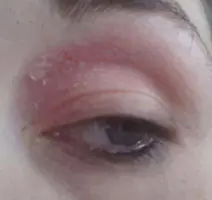
If the upper eyelid itches and peels, then you should not ignore this signal from the body. Most likely, it arose for a reason, and indicates certain problems with eye health.
Be that as it may, you should not self-medicate. In order not to harm yourself, you first need to establish the causes of peeling skin on the eyelids, and only then begin to act actively.
Causes of peeling eyelids
The most common factors that can be used to explain why the skin on the eyelids peels are:
- allergies or irritation of the epidermis caused by the use of low-quality or expired eye cosmetics
- seasonal allergies
- age factor (so-called dry eye syndrome)
- respiratory diseases
- dry skin
- hard or chlorinated water
- contact lenses that were not selected in accordance with all standards, or were stored incorrectly
- too dry air in the room, where most often there is a person who experiences redness and peeling of the upper eyelid (one or both)
- eye fatigue
- bad habit of constantly scratching your eyes
- prolonged sitting at a computer screen
- using aggressive products to wash or cleanse the skin of the face.
In addition to these factors, peeling and redness of the eyelids can be the result of a foreign object getting into the eyes. In this case, the person will also experience tearing, itching and burning of the eyes. Such irritation of the mucous membrane of the visual organ cannot but affect the condition of the skin of the eyelids.

If the cause of this phenomenon is not associated with serious diseases, then peeling of the skin on the eyelids will go away on its own in a few days. However, if there is any pathology, you should consult a doctor for advice. A thorough examination and modern diagnostic methods will help determine the exact cause of the anomaly.
Pathologies that can lead to peeling of the upper eyelid are:
- Demodicosis, the development of which is caused by hair mites. It can also be diagnosed at home. So, with this disease, the patient experiences redness and flaking on the eyelids, foamy liquid is released from the eyes, and itching and burning are felt. Eyelash loss, increased lacrimation and severe redness of the whites of the eyes are possible.
- Blepharitis. Pathology often develops in people with a weak immune system, as well as with chronic conjunctivitis, vitamin deficiency, and gastrointestinal diseases. Symptoms of the disease can manifest themselves as peeling of the skin of the eyelids, heaviness in the eyes, photophobia, swelling and hyperemia of the eyelids. When the eyelids begin to peel intensely, eyelash loss occurs. There is no need to hesitate: blepharitis is a dangerous disease that can become chronic.
- Conjunctivitis is an eye disease in which there is redness of the whites of the eyes, itching and the presence of purulent discharge. The eyes become swollen and photophobia appears. If the issue of treatment is not addressed in time, the patient’s eyelid skin will begin to peel, not only the upper, but also the lower.
- Barley. This pathology can develop against the background of incompletely cured or often recurrent conjunctivitis. It manifests itself through redness of the eyes and the formation of a lump with pathological contents on the surface of the eyelid (or on its mucous membrane). If the eyelid is peeling, watery eyes and a headache appear, be sure that your fears are correct - this is stye.
- Fungal infections. If the skin on the eyelids is red and peeling, especially in areas where there is hair, the cause of the abnormality may be a yeast fungus. The manifestations of the disease cannot be ignored, as it can be transmitted to others.
- Hormonal imbalance. This pathology can manifest itself in different ways. If, due to an allergy, red spots appear on the eyelids that itch and peel, then with a hormonal imbalance, only the rejection of dead epidermal cells is observed. This phenomenon is also not considered normal, but you should not take hormonal medications at your own discretion - leave the choice of medication to a qualified physician so as not to harm yourself.
- Herpes virus infection is another common reason why the skin on the upper eyelid peels. In this case, the epidermis becomes dry and red, and the patient develops blisters on the surface of the eyelids filled with infected fluid. They lead to itching, burning, and painful sensations.
It is extremely rare that the skin on the eyelids peels and itches, indicating the presence of:
- diabetes mellitus type 2
- liver dysfunction
- gastrointestinal diseases.
If you cannot independently identify the causes of dry eyelid skin and its peeling, this can only mean that some pathological processes are occurring in the body. The sooner they can be detected, the less dangerous and unpleasant the consequences for human health will be.
Useful tips for getting rid of flaking eyelid skin
To get rid of the problem, you need to carefully approach the question of what to do if the skin on your eyelids is peeling. First of all, determine the cause of this anomaly. Only after this, based on the results obtained, will it be possible to safely take certain measures.
So, general recommendations for getting rid of peeling skin of the upper eyelid are:
- Proper diet enriched with fresh fruits and vegetables.
- Avoiding stress and overwork.
- Using only high-quality decorative cosmetics.
- Purchase lenses and liquid for storing them only from trusted, licensed companies and pharmacies.
- Monitoring the cleanliness of facial skin in general.
- Avoiding eye strain.
- Avoiding contact with allergens that cause the eyelids to become red and flaky.
- Moisturizing dry eyelid skin with face creams or other cosmetics.
- Timely visit to the doctor for examination to identify various diseases. This step is especially important if all your efforts to get rid of itching and peeling of the eyelids have not been successful.
All kinds of medications are used to treat demodicosis, blepharitis, conjunctivitis or barley. In particular, this applies to eye drops and ointments.
If we are talking about herpes, due to which the skin on the eyelids becomes dry and peeling (at the last stage of the disease), then it can be cured with the help of tablets, creams or ointments (Acyclovir, Gerpevir, Zovirax, Acik, etc.).
Eye skin care and hygiene
If the skin on your eyelids is peeling, causing itching, burning, discomfort and watery eyes, you can try to relieve the condition yourself. For this purpose, decoctions of medicinal plants are used that have antiseptic, soothing, anti-inflammatory and bactericidal properties. These herbs include:
- pharmaceutical camomile
- calendula (marigold)
- series
- St. John's wort
- yarrow.
Healing decoctions are prepared from these herbs, which are then used to wipe the eyelids and skin around the eyes. There is nothing complicated in preparing such tonics.
Pour 1 spoon of raw material into 200-250 ml of boiling water and leave (or simmer for 7 minutes). Cool, squeeze out the pulp, filter. Use as directed 4-5 times a day.
Ordinary black tea helps perfectly in the fight against eye diseases (conjunctivitis, barley), in which the skin on the eyelids cracks and peels. Prepare the drink and let it cool to room temperature. Soak cotton wool or applicator in tea and rinse both eyes. A clean cotton swab should be used for each eye.
This manipulation needs to be done at least 5 times a day. Tea helps remove purulent discharge from the eyes due to conjunctivitis, relieves pain and burning in the eyes.
After complete elimination of eye pathologies, the use of decoctions of medicinal plants or tea leaves should be extended for a few more days in order to prevent relapses.
In addition, cucumber water for wiping the skin of the eyelids and around the eyes, as well as tar soap for periodic washing, are good eye hygiene products. Due to their beneficial properties, among which the antiseptic effect should be noted, these components perfectly combat eye fatigue and irritation. It is especially important to use them during the period when the air is literally filled with all kinds of allergens (in mid-spring, at the beginning and end of summer).
If all of the above methods of combating peeling of the eyelid skin are ineffective, be sure to consult an ophthalmologist. Such abnormalities, especially if they occur quite often, can cause serious harm to your health. Perhaps, after undergoing a thorough diagnosis, you will need drug treatment, which can only be prescribed by a qualified specialist!



